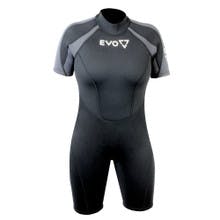Wetsuit FAQ
Should I wear anything under my wetsuit?
Honestly, it’s a matter of personal choice and convenience. If you’re changing into your scuba wetsuit at the beach or on a boat, know that there might not be a restroom or anywhere to change discreetly. Additionally, keep in mind that wetsuits can chafe. Our recommendation: try it out both ways and decide what you’re most comfortable with.
Is it better to have a tight or loose wetsuit?
The short answer is neither and both. Wetsuits are designed to trap a layer of water between your skin and the scuba wetsuit to keep you insulated. Too tight a fit will not allow the water to enter. On the other hand, too loose will not allow the water to stay trapped and you won’t get the insulation effect that you need.
Do you put on a wetsuit wet or dry?
It’s easiest to put on your scuba wetsuit when both you and the wetsuit are either dry or wet. If you’re wearing a dive skin under your scuba wetsuit, it’ll glide on easily whether the wetsuit is wet or dry.
How do I know if my wetsuit is too big?
Wetsuits are designed to trap a layer of water between your skin and its inside lining. If it’s too loose, water will not stay trapped and cooler water will be allowed to flow in reducing its effectiveness at keeping you warm.
Why wear a wetsuit?
A wetsuit helps you retain body heat by insulating you from the water. Wetsuits also protect your skin from the elements and stinging sea creatures.
How does a wetsuit work?
Wetsuits allow a thin layer of water in, then hold it against your skin. As your body heat escapes, it warms the layer of water which in turn provides the insulation you need to keep you comfortable.
Can a wetsuit be washed in a washing machine and dried in a dryer?
Not recommended. Instead, rinse your wetsuit with fresh water and a quality dive wetsuit shampoo to avoid odors from bacteria buildup and hang to dry.
Does a wetsuit really keep you warm?
Yes. There is a noticeable difference. Our body temp is, on average, 98.6 and when you’re in the water for multiple dives or long periods, you lose body heat (even in warm waters). The scuba wetsuit works to provide the insulation you need to keep you comfortable.
Are wetsuits waterproof?
No. Wetsuits are designed to allow a thin layer of water in, which is warmed by your body heat and serves as insulation keeping you warm.












